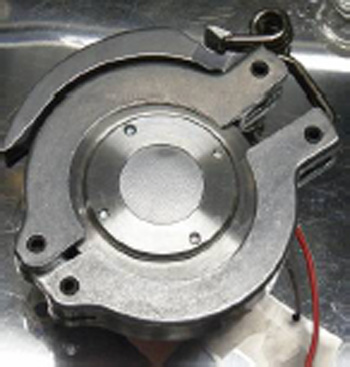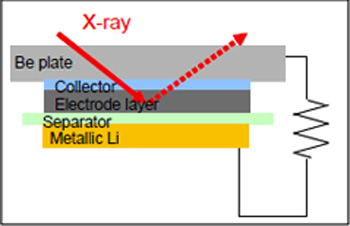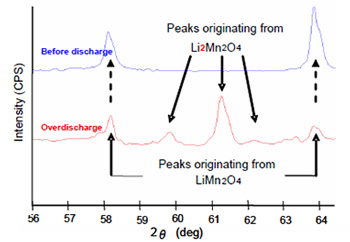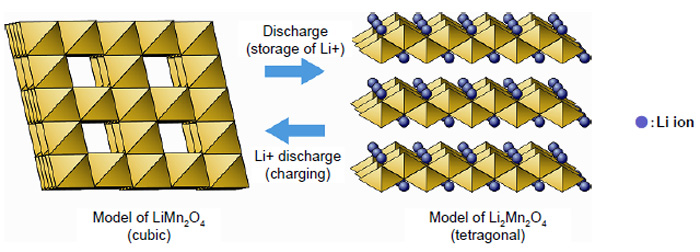Disassembly Investigation of Batteries and Capacitors,
Investigation for Deterioration and Defect,
and Structural Analysis
In-situ XRD Measurement
Understanding the mechanism of the electrode reactions which occur during charging and discharging is extremely important for elucidating the mechanism of cell deterioration.
In lithium (Li) ion cells, Li ions enter and are discharged from the positive and negative electrodes during charging and discharging, and structural changes and volumetric changes occur accompanying these cell reactions.
In-situ XRD measurement makes it possible to measure these changes.
In-page menu
In-situ XRD Measurement
-
Measurement of metallic Li, charged negative electrodes, and other parts under the atmospheric environment had been difficult due to the high reactivity with water and oxygen.
Therefore, JFE-TEC introduced the special cell (Be window) shown in Photo 1 in order to perform in-situ XRD measurement under an atmospheric non-exposure (atmospheric isolation) condition.In-situ XRD measurement while charging/discharging was also realized by including a simple battery in the cell (Fig. 1).
-

Photo 1 Cell for in-situ XRD
measurement
(manufactured by Rigaku Corp.) -

Fig. 1 Structure of cell for in-situ XRD
measurement
(enabling charging and discharging)
Example of In-situ Measurement of Positive Electrode Material during Charging/Discharging
- In-situ XRD measurement of LiMn2O4positive electrode during charging and discharging
A simple cell was prepared using LiMn2O4in the positive electrode and metallic Li in the negative electrode, and in-situ XRD measurement was performed in an overdischarge condition, as shown in Fig. 2.
This experiment confirmed that, in the overdischarge condition (excessive storage of Li ions on positive electrode side), a structural change occurs accompanying the phase transition, as shown in the following equation and Fig. 3:
LiMn2O4(cubic)+Li ⇔ Li2Mn2O4(tetragonal)

LiMn2O4 positive electrode



